#George Randol
Explore tagged Tumblr posts
Text

#The Exile#Eunice Brooks#Stanley Morrell#Celeste Cole#Nora Newsome#Carl Mahon#Kathleen Noisette#Charles R. Moore#George Randol#A.B. DeComathiere#Lou Vernon#Oscar Micheaux#1931
2 notes
·
View notes
Text
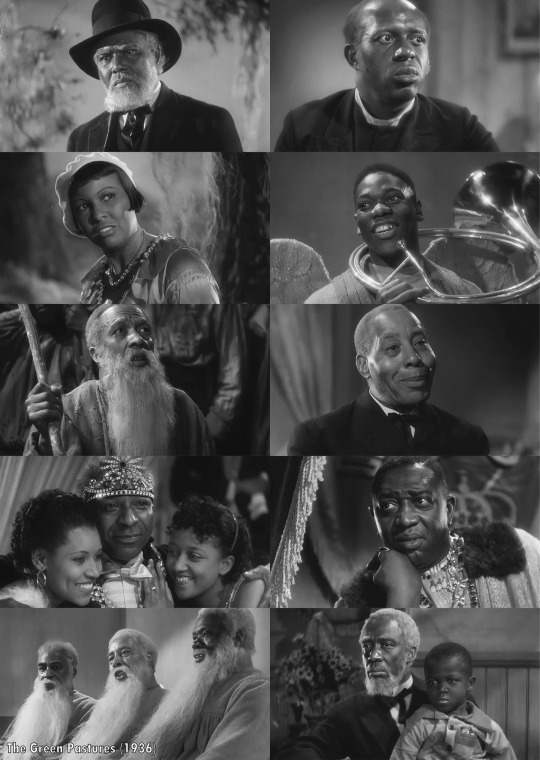
"The Green Pastures" (1936) is a fantasy film directed by Marc Connelly and William Keighley and written by Connelly and Sheridan Gibney, who based the film on the novel "Ol' Man Adam an' His Chillun" by Roark Bradford. Marc Connelly adapted the story into a Pulitzer Prize-winning stage play in 1930. The movie has an all-black cast film produced by Warner Brothers and stars Rex Ingram, Frank Wilson, Oscar Polk, Eddie 'Rochester' Anderson, and George Reed.
Unlike Race Films made by Oscar Micheaux and Ralph Cooper during this period, "The Green Pastures" was a major Hollywood production. The film received substantial advertising as the nation was already familiar with the play's success, so people were anticipating seeing the motion picture version. Rex Ingram was the lead in the film as the character "De Lawd."
The film features several up-and-coming actors, like Ingram, Eddie 'Rochester' Anderson, Oscar Polk, and Edna Mae Harris. For many, this was their breakthrough film. For example, George Randol, who played the high priest in the movie, started a production company with Ralph Cooper, where they released the first film produced with an all-black capital called "Dark Manhattan" in 1937. The film also featured the Hall Johnson choir. Mr. Johnson was a black composer known for his arrangements of African-American spirituals. Throughout the 30s and 40s, many films featured the ensemble, including "Dimples" (1936) and the controversial movie "Song of the South" (1946).
"The Green Pastures" is a fantastic film with wonderful music and charming characters. However, there are, without a doubt, stereotypical portrayals of black people within the movie. As a result, some people may find the film challenging to watch if they need help seeing past the 1930s attitude. Nevertheless, the movie is a remarkable production, and Rex Ingram will be unforgettable after you watch his performance. It's a personal favorite and one that I watch every year. I highly recommend it for viewing.
Directors: Marc Connelly, William Keighley Writers: Roark Bradford, Marc Connelly, Sheridan Gibney
Starring Rex Ingram, Oscar Polk, Eddie 'Rochester' Anderson, Frank H. Wilson, George Reed, Abraham Gleaves, Edna Mae Harris, James Fuller, George Randol, Hall Johnson Choir, Billy Cumby, Ivory Williams, Dudley Dickerson, Ida Forsyne, Myrtle Anderson, Charles Andrews, Ernest Whitman, Reginald Fenderson
Storyline A preacher in a small Black church in Louisiana tells his Sunday school class stories from the Bible as if the characters were part of a local fish fry. He starts with the creation of the world by God, known as "De Lawd" (Rex Ingram), and tells how God went on to create heaven, which is just like their farmland, and then created man and woman, followed by their fall and finally the coming of Jesus Christ.
Available on DVD and streaming services. https://www.amazon.com/Green-Pastures-Eddie.../dp/B00B6OECDK
3 notes
·
View notes
Text
Watching 1939: Midnight Shadow (1939)
Watching 1939: Midnight Shadow (1939)
In 2011, I announced I was trying to see every film released in 1939. This new series chronicles films released in 1939 as I watch them. As we start out this blog feature, this section may become more concrete as I search for a common thread that runs throughout each film of the year. Right now, that’s difficult.
1939 film: Midnight Shadow (1939)

Release date: May 1939 (first date referenced…
View On WordPress
0 notes
Text



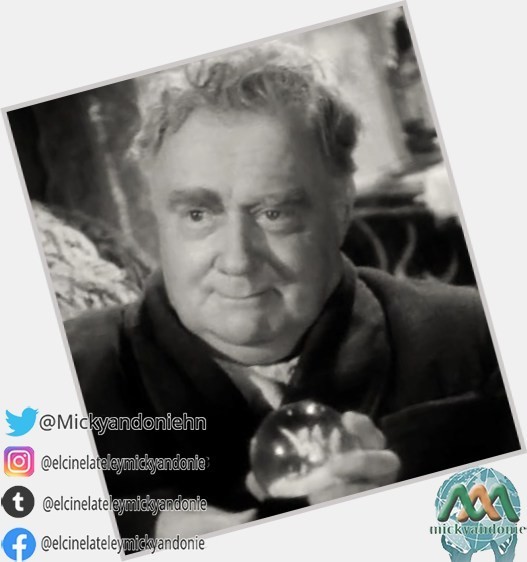
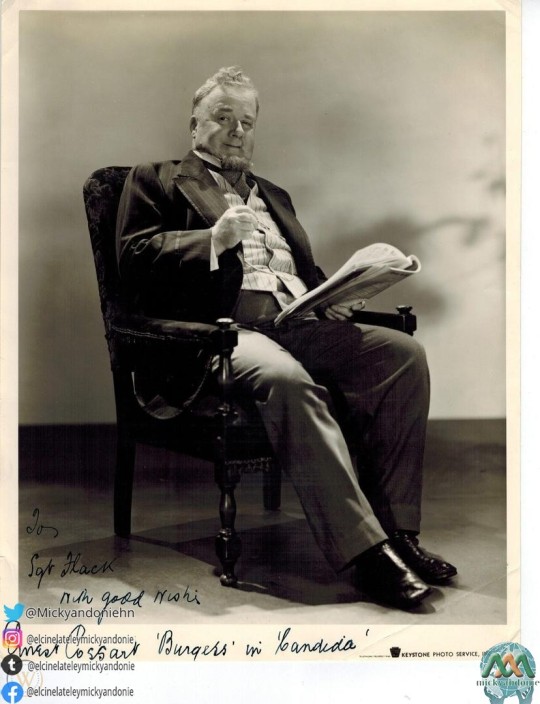
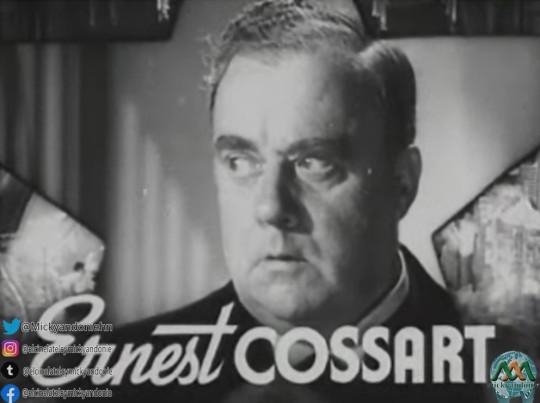
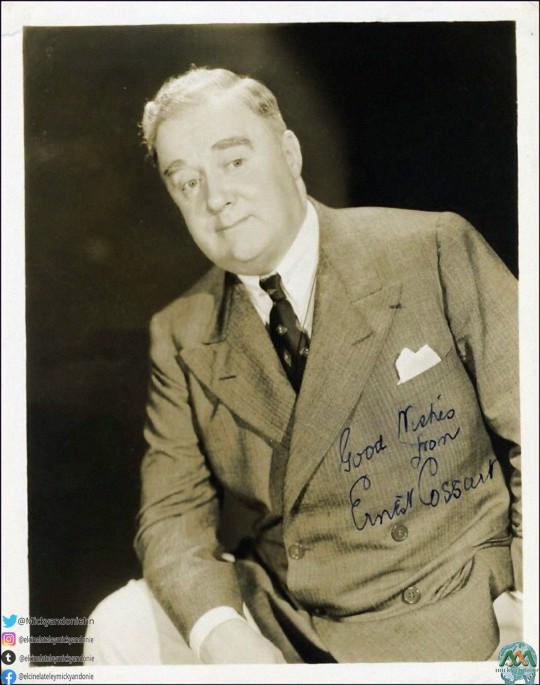


Ernest Cossart.
Filmografía
Cine
1916: The Pursuing Vengeance, de Martin Sabine.
1935: The Scoundrel, de Ben Hecht y Charles MacArthur.
1936: El gran Ziegfeld, de Robert Z. Leonard.
1936: Three Smarts Girls, de Henry Koster.
1936: Murder with Pictures, de Charles Barton.
1937: Angel, de Ernst Lubitsch.
1937: Champagne valse, de A. Edward Sutherland.
1939: Zaza, de George Cukor.
1939: Tower of London, de Rowland V. Lee.
1939: Three Smart Girls Grow Up, de Henry Koster.
1939: The Light that Failed, de William A. Wellman
1939: Lady of the Tropics, de Jack Conway.
1940: Kitty Foyle, de Sam Wood.
1940: Tom Brown's School Days, de Robert Stevenson.
1941: Skylark, de Mark Sandrich.
1942: Kings Row, de Sam Wood.
1945: Love Letters, de William Dieterle.
1945: Tonight and every Night, de Victor Saville.
1946: Cluny Brown, de Ernst Lubitsch.
1946: The Jolson Story, de Alfred E. Green
1947: Love from a Stranger, de Richard Whorf.
1949: John Loves Mary, de David Butler.
Teatro (Broadway)
1908: The Girls of Gottenberg, música de Ivan Caryll y Lionel Monckton, letras de Adrian Ross y Basil Hood.
1910: Mrs. Dot, de William Somerset Maugham, con Billie Burke.
1910: Love among the Lions, de Winchell Smith a partir de F. Anstey, con Ivan F. Simpson
1911: The Zebra, de Paul M. Potter a partir de Marcel Nancey y Paul Armont.
1912: The Typhoon, de Emil Nyitray y Byron Ongley a partir de Menyhert Lengyel.
1914: Marrying Money, de Washington Pezey y Bertram Marbugh.
1915: Androcles and the Lion, de George Bernard Shaw.
1915: The Man who married a Dumb Wife, de Anatole France, con Isabel Jeans.
1915: El sueño de una noche de verano, de William Shakespeare, con Isabel Jeans.
1915: The Doctor's Dilemma, de George Bernard Shaw.
1915: Sherman was right, de Frank Mandel.
1920-1921: The Skin Game, de John Galsworthy.
1921: The Title, de Arnold Bennett, interpretada y dirigida por Lumsden Hare.
1922: HE Who gets slapped, de Leónidas Andreiev, adaptada por Gregory Zilboorg, con Richard Bennett, Margalo Gillmore, Edgar Stehli, Henry Travers y Helen Westley.
1922: From Morn to Midnight, de Georg Kaiser, adaptada por Ashley Dukes, con Allyn Joslyn, Edgar Stehli, Henry Travers y Helen Westley.
1922-1923: Seis personajes en busca de autor, de Luigi Pirandello, adaptada por Edward Storer, con Florence Eldridge.
1923: The Love Habit, adaptación de Gladys Unger a partir de Pour avoir Adrienne, de Louis Verneuil, con Florence Eldridge.
1923: Casanova, de Lorenzo De Azertis, adaptada por Sidney Howard.
1923-1924: Santa Juana, de George Bernard Shaw, con Henry Travers.
1924: Seis personajes en busca de autor.
1924: The Steam Roller, de Laurence Eyre.
1924-1925: Cándida, de George Bernard Shaw, con Pedro de Cordoba.
1925-1926: Arms and the Man, de George Bernard Shaw, con Pedro de Cordoba y Henry Travers.
1926: The Chief Thing, de Nikolaï Evreinov, adaptada por Leo Randole y Herman Bernstein, con Romney Brent, Edward G. Robinson, Lee Strasberg, Henry Travers y Helen Westley.
1926-1927: Loose Ankles, de Sam Janney.
1926-1927: What never dies, de Alexander Engel, adaptada por Ernest Boyd.
1927-1928: The Doctor's Dilemma, de George Bernard Shaw, con Margalo Gillmore, Alfred Lunt, Henry Travers y Helen Westley.
1928: Marco Millions, de Eugene O'Neill, escenografía de Rouben Mamoulian, con Robert Barrat, Albert Dekker, Margalo Gillmore, Alfred Lunt, Vincent Sherman y Henry Travers.
1928: Volpone, de Ben Jonson, adaptada por Ruth Langner, con Albert Dekker, Margalo Gillmore, Alfred Lunt, Vincent Sherman, Henry Travers y Helen Westley.
1928-1929: Caprice, de Philip Moeller, con Douglass Montgomery.
1929: Becky Sharp, de Langdon Mitchell, a partir de La feria de las vanidades, de William Makepeace Thackeray, con Etienne Girardot, Arthur Hohl, Basil Sydney y Leonard Willey.
1930: The Apple Cart, de George Bernard Shaw, con Violet Kemble-Cooper, Tom Powers, Claude Rains y Helen Westley.
1930: Milestones, de Arnold Bennett y Edward Knoblauch, con Beulah Bondi y Selena Royle.
1931: Getting Married, de George Bernard Shaw, con Romney Brent, Dorothy Gish, Henry Travers y Helen Westley.
1931: The Way of the World, de William Congreve, con Walter Hampden, Gene Lockhart, Kathleen Lockhart, Selena Royle y Cora Witherspoon.
1931: The Roof, de John Galsworthy, con Henry Hull y Selena Royle.
1932: The Devil passes, de Benn W. Levy, con Eric Blore, Arthur Byron, Mary Nash y Basil Rathbone.
1932: Too true to be good, de George Bernard Shaw, escenografía de Leslie Banks, con Leo G. Carroll y Claude Rains.
1933: The Mask and the Face, de W. Somerset Maugham, con Leo G. Carroll y Humphrey Bogart
1933-1934: Mary of Scotland, de Maxwell Anderson, con Helen Hayes, Edgar Barrier, George Coulouris, Philip Merivale, Moroni Olsen y Leonard Willey.
1935: Accent on Youth, de Benn W. Levy
1937: Madame Bovary, de Benn W. Levy, a partir de Gustave Flaubert, con Eric Portman y O. Z. Whitehead.
1945: Devils Galore, de Eugene Vale.
1948: The Play's the Thing, de Ferenc Molnár, adaptada por P. G. Wodehouse, con Louis Calhern, Francis Compton y Faye Emerson.
1949: The Ivy Green, de Mervyn Nelson, con Hurd Hatfield.
Créditos: Tomado de Wikipedia
https://es.wikipedia.org/wiki/Ernest_Cossart
20 notes
·
View notes
Text
Summary Statement, 2nd Quarter, 1863 – 1st Regiment, US Regulars
Summary Statement, 2nd Quarter, 1863 – 1st Regiment, US Regulars
So to start the review of the summary statements from the second quarter, 1863, the First Regiment of the US Artillery is appropriately at the front of the queue:
The batteries of the First were detailed to assignments across various theaters of war, though not to the Trans-Mississippi. Looking at the administrative details by battery:
Battery A– Reporting at Port Hudson, Louisiana with four…
View On WordPress
#1st US Artillery#Alanson Randol#Battery A 1st US Artillery#Battery B 1st US Artillery#Battery C 1st US Artillery#Battery D 1st US Artillery#Battery E 1st US Artillery#Battery F 1st US Artillery#Battery G 1st US Artillery#Battery H 1st US Artillery#Battery I 1st US Artillery#Battery K 1st US Artillery#Battery L 1st US Artillery#Battery M 1st US Artillery#Beaufort SC#Chandler P. Eakin#Edmund C. Bainbridge#Fort Macon#George Woodruff#Guy V. Henry#Hilton Head#James E. Wilson#Loomis L. Langdon#Manchester PA#Philip D. Mason#Port Hudson#Richard C. Duryea#Warrenton VA#William Graham
0 notes
Photo

"Midnight Shadow" (1939) is an all-black cast that is a noir mystery part of the era of black filmmaking called Race Films. The movie was written, directed, and produced by George Randol. And according to The Pittsburgh Courier, an African-American newspaper, from May 27, 1939, "It is the first all-race film studio to finance a film with all sepia capital." I'm not exactly sure how true that is because of Oscar Micheaux's productions, and I have realized that these old-school black newspapers would magnify every black film that came out. I'm not mad at it, either. The film does feature a cast of seasoned actors such as Buck Woods, Jesse Lee Brooks, and Laurance Criner. The film also features Dorothy Dandridge's mother, Ruby Dandridge. However, Randol marketed the movie with Frances Redd as the feature, even though much of the film followed Buck Woods and his partner Richard Bates throughout. Frances Redd landed her role by writing a letter to Randol expressing her desire to be an actress. In her wildest dreams, she landed a part and found herself heading to Hollywood to film the movie. In addition, the news article continues, "It goes to show that if you support sepia films or films that are kind to your race, that it opens new avenues of employment." Powerful. By today's standards, this film has its struggles. However, Redd is a new actress, which shows when she is up against the seasoned ones. The editing and audio also had troubles, as the editor battled poorly cut scenes, and the audio technician could not keep a consistent volume. Nevertheless, this film is a glance at what black filmmaking looked like back then. Director: George Randol Writer: George Randol Starring Frances Redd, Buck Woods, Richard Bates, Laurance Criner, Jesse Lee Brooks, Ollie Ann Robinson, Clinton Rosemond, Edward Brandon, Pete Webster, Ruby Dandridge Storyline Prince Alihabad visits the home of the Wilsons, where he takes attraction to their only daughter, Margaret. Mr. Wilson encourages the marriage between the two and shows Alihabad some of his valuables. However, one morning when Margaret wakes up, she finds her father murdered and her home burglarized. With a call for help, two lofty detectives are on the case to solve the mystery. https://www.daarac.ngo https://www.daaracarchive.org/.../midnight-shadow-1939.html Available on DVD and streaming services. https://www.amazon.com/Harlem-Double.../dp/B005ENCITE
0 notes